The Block Historical Marker, Charleston West Virginia
Introduction
Text-to-speech Audio
Images
Historical marker placed in 2013 by the WV Center for African American Art & Culture, Inc. The marker is located in the parking lot of a current Charleston hotel (formerly the site of the segregated Black only Ferguson Hotel).
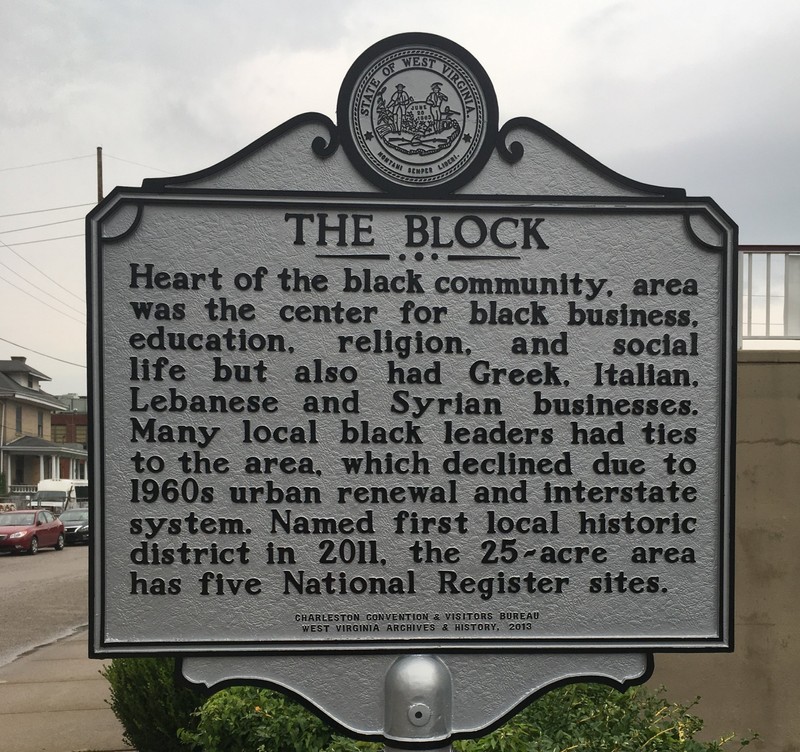
Appalachian Power Park Building, 601 Morris Street, Charleston WV; corner of Morris & Lewis Street; location of display regarding "The Block" and other wall displays of African American history of Charleston WV.
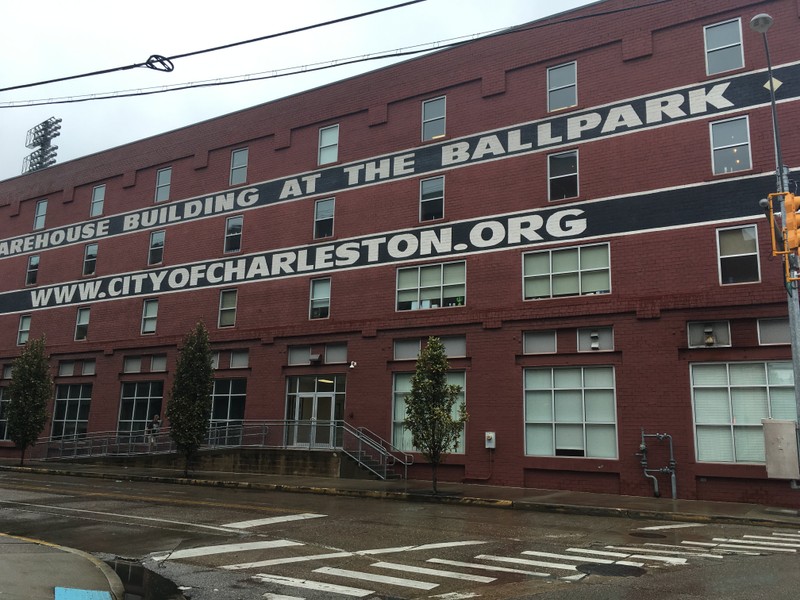
"The Block" display, Appalachian Power Park Building; 601 Morris Street, Charleston WV.
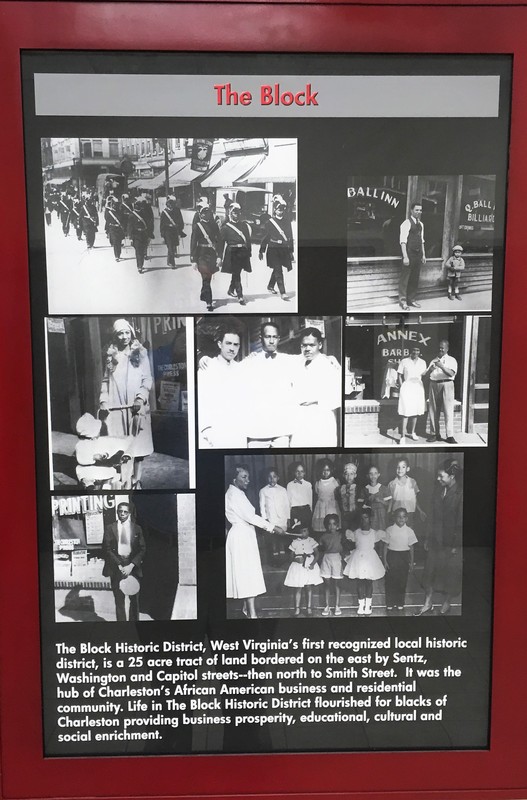
"The Block" display; map of Historic District, West Virginia's first local recognized historic district including five sites on National Register of Historic Places: Mattie Lee Home, Sam Starks Home, Garnet School, Simpson Church & Gilmore House.

"The Block" Historic District display, located on Washington Street, East (across from Clay Center, Charleston WV).
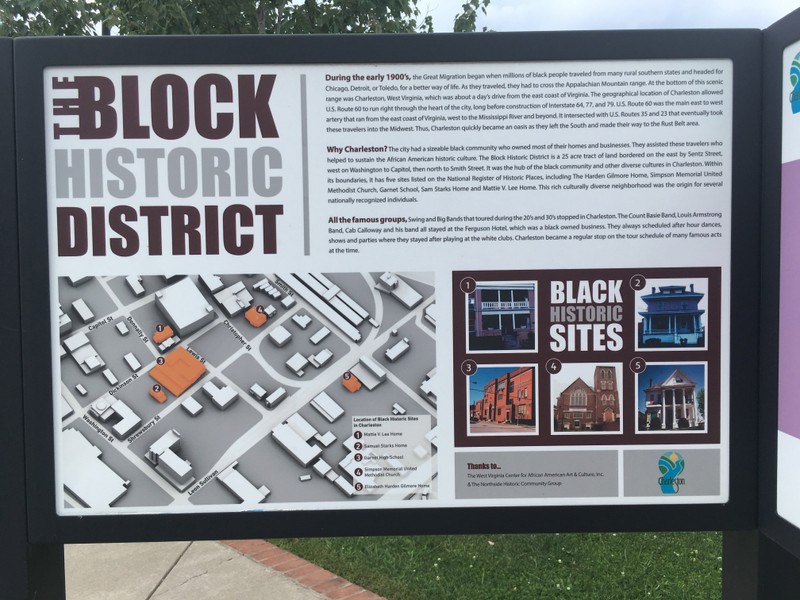
Second historical marker, "The Block", at historic Simpson Memorial United Methodist Church, Shrewsbury Street, Charleston; one of five historic sites located in "The Block" (duplicates the marker placed at Shrewsbury & Washington Street, East).

Out-of-print book; "The Block" contents include information & pictures about businesses, individuals and social life in the neighborhood; plan for future re-print through the W.Va. Center for African-American Art & Culture, Inc.
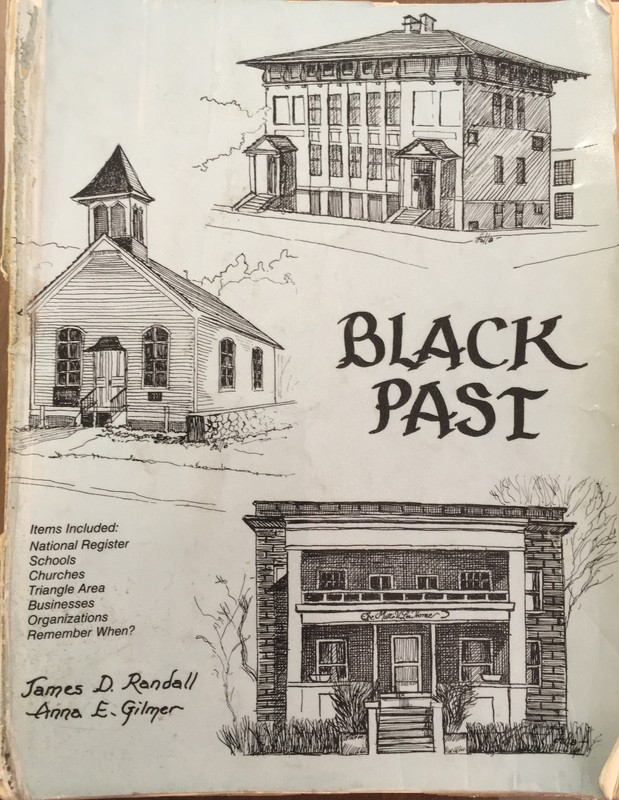
Backstory and Context
Text-to-speech Audio
In the 1900’s many African Americans traveled from rural southern states heading to Chicago, Detroit or Toledo. As they crossed the Appalachian mountain range, the city of Charleston, West Virginia was an accessible location because of the development of major US highways. Charleston had at the time a large African American population who owned most of their homes and ran Black businesses. The location of these homes and businesses was commonly referred to as “The Block”. Local persons reached out to those traveling and welcomed their re-location and contribution to the community. This “rich culturally diverse neighborhood was a 25-acre tract of land bordered on the east by Sentz Street, west on Washington to Capitol Streets, then north to Smith Street.”1 The neighborhood was the center of social, economic, educational and religious life for African Americans. Not only were Black residences and businesses predominant in “The Block”, the area was also a location for Greek, Italian, Lebanese and Syrian businesses.
Life in “The Block” during the Jim Crow era and period of segregation (late 19th century and early 20th century) has been described by former residents and business owners as “safe. . .a beautiful area where everybody was your protector, and friends and family looked after one another.” One former resident describes, “Days growing up on The Block meant playing with other children across the neighborhood, whether they were white, Black, Greek, Syrian or Lebanese. Everybody participated in keeping the kids engaged and making sure there was something to do. With segregation, it was something that just happened. It was a part of everyday life; it was something that just occurred, and our lives continued. We lived in a mixed community, and we were friends with kids in the community.”2
James D. Randall and Anne E. Gilmer wrote a series on early Black history in an African American newspaper that was geared toward the Black population in the State of West Virginia, the West Virginia Beacon Digest. The newspaper office was located in “The Block”. In their history articles, they spotlighted African American leaders, businesses, and churches. From that came a book published by the Beacon Digest in 1989 – Black Past in which Randall and Gilmer chronicle the persons, businesses, churches and school located in “The Block”.3 They tell the stories of business locations that made up the area that now only has five of the original structures. Those stories and locations are about the community life and contribution of individuals, such as The Ferguson Hotel (a Black only hotel) which hosted national African American entertainers like Louis Armstrong, Count Basie, Duke Ellington, Nat King Cole and Ella Fitzgerald. Randall & Gilmer’s book chronicles places like the barber shop, churches, the segregated high school, civic clubs, a few physician offices and the pharmacy with a soda fountain. They write, “Many children looked forward to their weekly treat of a chocolate soda after Sunday School.”4
Very few of the original homes and businesses remain in “The Block” today. Urban renewal, development of the US interstate system through the city, a decline of the African-American population and loss of private homes have left very little of the original structures. Five original buildings, which have been individually listed on the National Register of Historic Places, are located in the historical center of African-American life in Charleston WV. These five buildings (in order of their placement date on the National Register) contribute to the lessons of history in “The Block” – (1988) Elizabeth Harden Gilmore House, home of a pioneer of the civil rights movement in West Virginia; (1988) Sam Starks Home, home of a prominent African American politician who became the first African American state librarian; (1990) Garnet High School, one of three Black high schools in the city during segregation; (1991) Simpson Memorial United Methodist Church organized just at the end of the Civil War; and, (1992) Mattie V. Lee Home, named for the first African-American woman physician from West Virginia, was a safe haven for young women coming to Charleston for employment. In 2011, through the efforts of the West Virginia Center for African-American Art & Culture and Anthony Kinzer, its Executive Director, “The Block” obtained the designation as a Local Historic District by the Charleston Historic Landmarks Commission. “Since so few original buildings in The Block remain, the district is ineligible for listing as a historic district on the National Register of Historic Places.” (Anthony Kinzer, Sr. personal interview)
The West Virginia Center for African American Art & Culture, a nonprofit organization, was organized in 2001. The Center has partnered with individuals, civic leaders, organizations and state agencies to provide education and cultural dialogue. The Center has continued to tell the story of “The Block” through a cooperative venture with the Charleston Convention and Visitors Bureau at Appalachian Power Park Building, 601 Morris Street that displays the stories of “The Block”. Since 2014 The Center has sponsored in partnership with the West Virginia State Archives & History – “The Block Speaker Series”, which has brought local, state and national individuals to tell their personal stories of growing up, living and working in “The Block”. Through the work of The Center, history of “The Block” has recognized the outstanding contributions of persons like civil rights leader Leon Sullivan and a thoracic cardiovascular surgeon/researcher, John Norman as well as countless numbers of individuals who have contributed to the common good of society and their families. The Center anticipates in the future a re-print publication of the now “out-of-print” book, Black Past by James D. Randall and Anne E. Gilmer. Anthony Kinzer, Executive Director of the Center writes in Goldenseal State Magazine about “The Block”:
“The Block encouraged individuals to make their mark on the world and to work hard for better living conditions for themselves, their families, and their community. It created a sense of pride and confidence for these folks to know they could make a difference, regardless of the circumstances of their lives. The things they learned and accomplished on The Block gave rise to a strong Black middle class and the name “The Block” still brings a tear to the eye along with a smile to those who grew up there.” 5Five African American historic sites on the National Register of Historic Places are located in “The Block”. Through the ongoing work of the West Virginia Center for African-American Art & Culture, Inc. the personal stories and impact on contemporary society of former residents and business owners are featured in “The Block Speaker Series”, in conjunction with the West Virginia Archives & History on the grounds of the State Capitol. This rich culturally diverse historic neighborhood was home to several nationally recognized individuals (educators, civil rights leaders, physicians, business persons, and religious leaders). Urban renewal, development of the US interstate system, a decline of the African American population and loss of private homes have left very little of the original structures. “The Block” is full of heritage and story that has contributed to the common good of society and culture.
Sources
1Nuzum, Lydia. "Charleston remembers 'The Block', the heart of its Black community." Charleston Gazette-Mail(Charleston WV), May 25, 2014.
2Molenda, Rachel. "Charleston's Black history on display." Charleston Gazette-Mail(Charleston WV), August 21, 2015.
3 & 4Gilmer, Anna & Randall, James. Black Past. West Virginia Beacon Digest, Charleston WV 1989 (out of print). WV Center for African American Art & Culture. (anticipated re-print, 2018) permission for usage by Director, WV Center for African American Art & Culture, Inc., Charleston WV.
5Kinzer, Anthony. "The Block." Goldenseal. W.Va. State Cultural magazine, Spring 2017 edition, Page 71 The Cultural Center, 1900 Kanawha Blvd. East, Charleston WV 25305
